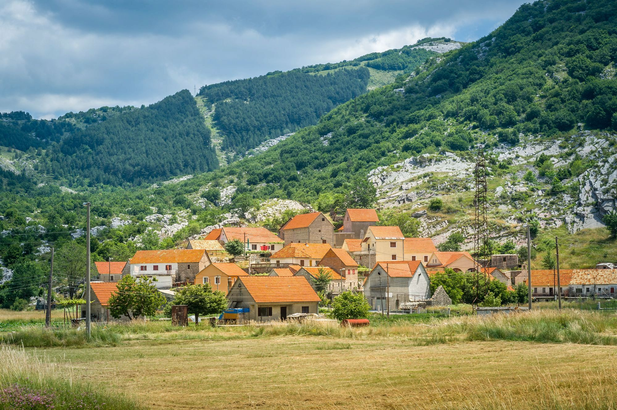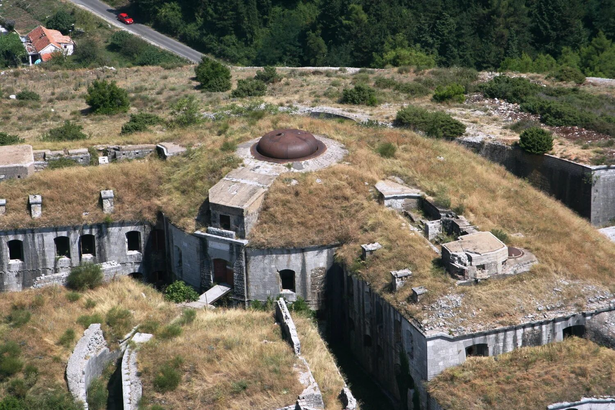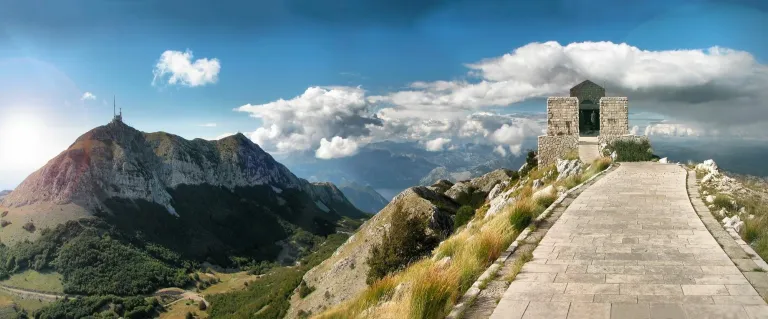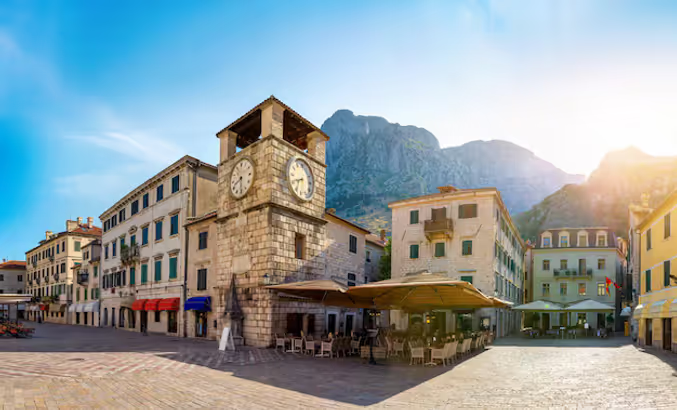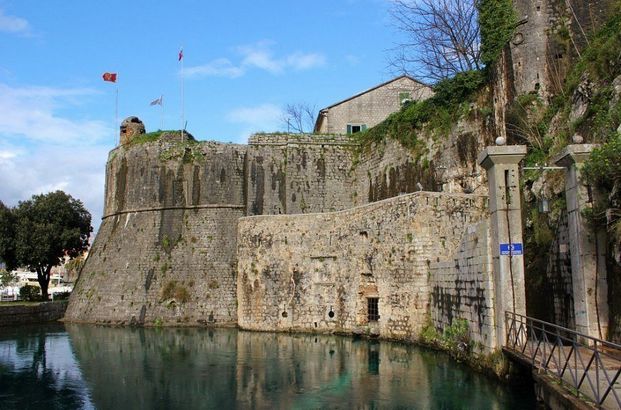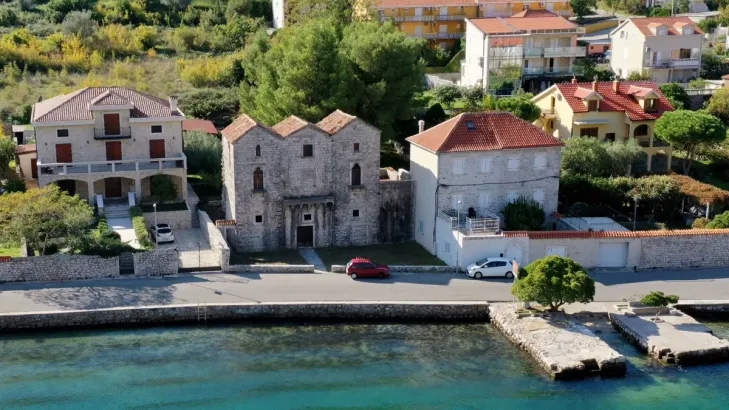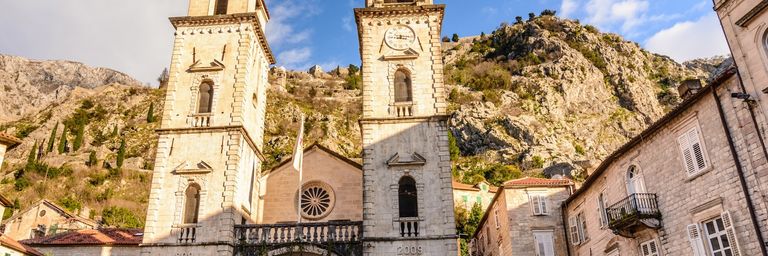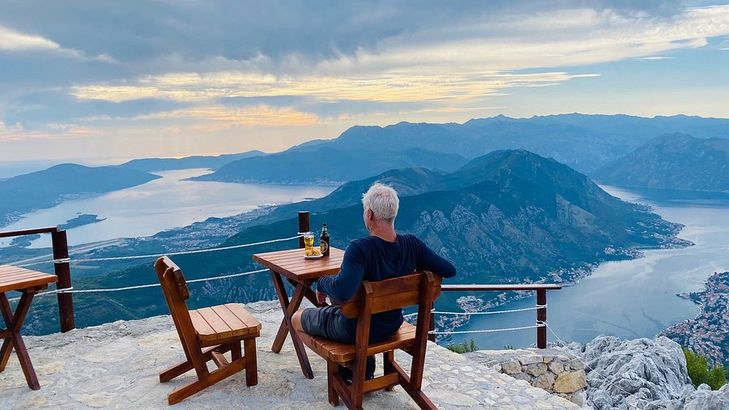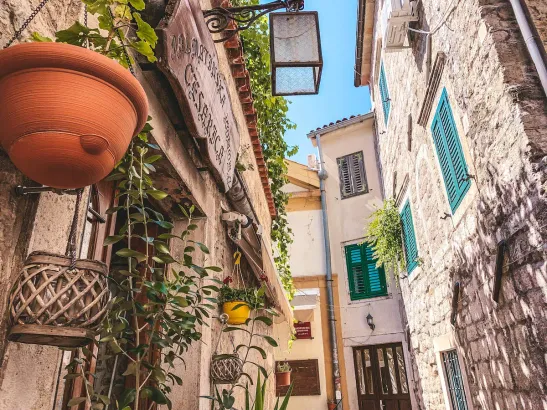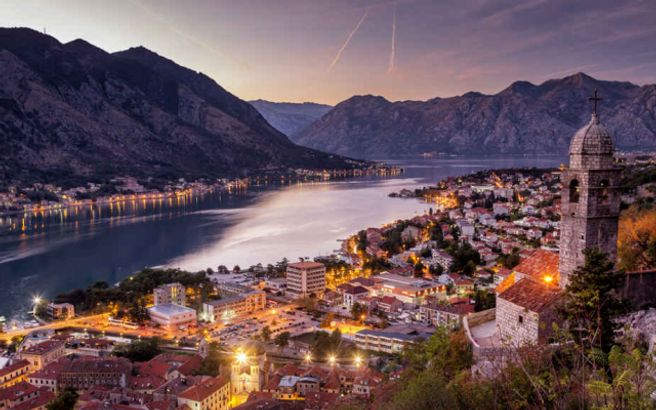The village is known as the birthplace of the Petrovic (Njegos) royal dynasty, which ruled Montenegro from 1696 to 1918. The rich history, traditional national cuisine, and hospitality of the locals have contributed to the village's popularity as a tourist destination.
On a picturesque cliff near Kotor, there is a mysterious and ivy-covered abandoned fortress called Vrmac. It was built at the turn of the 19th and 20th centuries during the Austro-Hungarian rule.
n important historical and cultural monument located on the top of Mount Lovcen. The mausoleum is dedicated to Metropolitan Petar II Petrović-Njegoš, a prominent Montenegrin ruler, poet, and philosopher, and one of the main fighters for Montenegrin independence from Turkish and Austro-Hungarian rule.
Built in 1602, the Kotor Clock Tower is one of the most recognizable landmarks in Kotor Old Town. Dominating Kotor’s largest square—the Square of the Arms—its plain stonework and clock faces match the stark mountains behind it and are the first things you see as you emerge from the Sea Gate entrance in the town walls.
The southern gate of old Kotor is called Gurdich, after the river that runs around the southern part of the fortress walls. Gurdich is a river with a constantly changing bed, during heavy rain the water rushes out of the cave with great force and rushes into the bay, and in the dry summer the source of the river dries up and it is filled in the opposite order with sea water.
These historic defenses ensured the city within would survive hundreds of years of occupations, sieges, and invasions.
The legend of Tre Sorelle is a captivating folk tale that originates from the Bay of Kotor region in Montenegro. It tells the story of three sisters who all fall in love with the same sailor, with their love unrequited. This legendary tale has been passed down through generations around the bay for centuries and has its roots in Prčanj, a town near Kotor.
Hidden away in the northeastern fringes of Kotor Old Town, the Church of St. Luke is one of the city’s oldest churches. Dating from 1195, this tiny and modest-looking Romanesque church hides a shimmering interior and an unexpected feature: Christian and Orthodox altars sitting side by side.
St. Tryphon Cathedral is an impressive sight sandwiched between Montenegro’s UNESCO-listed walled city of Kotor and the mountains behind it. Rebuilt several times between the 12th and 17th centuries, this remarkable church is known for its original Romanesque architecture and sacred treasures and as a religious and cultural cornerstone of this history-steeped old town.
The Horizont Café perched up high with one of the best views in the region. From this terrace, the entire Montenegrin landscape seems to unfold before your eyes—mountains stretching into the horizon and rolling hills below. It’s the perfect place to relax after exploring, especially as the sun starts to set, casting the town and the surrounding nature in a warm glow. Order a coffee or a glass of local wine, sit back, and enjoy the view—this is Montenegro at its most peaceful and beautiful.
This park is all about dramatic scenery and cultural significance. Perched on Mount Lovćen is the Njegoš Mausoleum, the resting place of Montenegro’s beloved ruler and poet, Petar II Petrović-Njegoš. Reaching it involves climbing 461 steps—sure, it’s a bit of a workout, but the 360-degree view from the top is pure magic. You can see all the way to the Adriatic on a clear day, and it’ll make you feel on top of the world.
This medieval beauty is what happens when ancient stone buildings, secret alleyways, and a splash of Venetian influence come together. The whole place is like a living, breathing museum—but one that smells of fresh bread and espresso.
The winding roads around the bay lead you to quaint villages, each with its own charm. The calm waters make it ideal for swimming, kayaking or paddleboarding. This entire area is hands down one of the most photogenic spots in the country, and you’ll be snapping pics like it’s your job.
That's all
